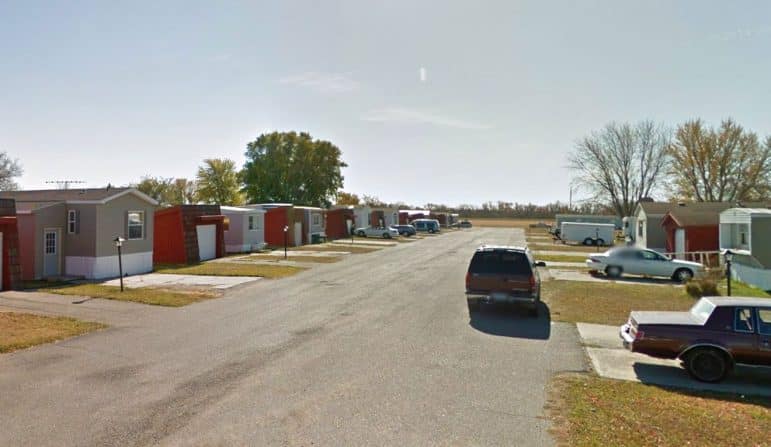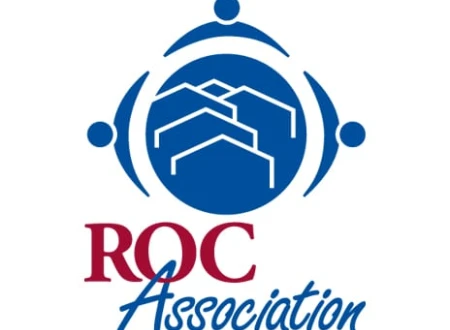
Seasoned ROC leaders help ease anxiety for new Minnesota ROC and others considering purchase
BRECKENRIDGE, Minn. – Becoming a new ROC can be intimidating at first. There’s an anxious feeling of the unknown and the inevitable collective question always arises: “Can we really buy our neighborhood and run it together?”
Thankfully, ROC Association leaders can help make the transition into resident ownership seamless because they have all been there, asking the same questions. When Natividad Seefeld, chair of ROC Association’s Policy and Advocacy Committee and Board President at Park Plaza in Fridley, Minn., and Bobbie Grubb, co-chair of ROC Association’s Outreach and Education Committee and homeowner at Pammel Creek Estates in La Crosse, Wisc., were asked to visit with homeowners at Bois de Sioux Cooperative in nearby Breckenridge, Minn., they were more than happy to help.
“It’s so important that we are able to do that, not just as leaders but to share our experiences as residents,” Seefeld said. “It’s a scary process and there’s a lot thrown at you when you become a Co-op. I think bringing in someone from another community should always be a part of the process. It gives folks an opportunity to ask questions because we are on the ground level. We have done it, too. It takes a lot of fear out of the process, makes it less scary and allows us all to connect and get involved with ROC Association.”
According to Joel Hanson, Advocacy and Communications Manager at Northcountry Cooperative Foundation (NCF), a ROC USA Certified Technical Assistance Provider, Bois de Sioux residents voted last August to move forward with the process of becoming resident owned. Grubb, who is also an NCF Board Member, joined the community’s first meeting via Zoom and explained the resident purchase process from the perspective of someone who had gone through it.
“I enjoy coming into a community and drawing on my experiences to help them through the purchasing/onboarding process,” Grubb said. “All ROC Members have different experiences.”
On March 29, homeowners purchased the 75-home community, for $1.1 million. Financing for the community was available with loans through the Minnesota Housing Finance Agency and NCF’s Cooperative Loan Fund. Bois de Sioux is Minnesota’s 16th ROC and the 326th ROC across the country.
In January, the Minnesota Housing Finance Agency announced more than $10.7 million in funding for critical infrastructure projects at six ROCs across the state, including Bois de Sioux, which received $536,800. That funding – from the Manufactured Home Community Redevelopment Program (MHCR), which is run by MHFA – will be used to replace water and sewer systems, repair electrical service boxes, make street improvements, demo old garages, prepare vacant lots and improve surface drainage. While this grant was not used directly to purchase the community, it helped pay for needed infrastructure improvements that the cooperative would have had to pay for otherwise, Hanson said, adding that it reduced the amount of money the cooperative needed to borrow, making it less expensive for the homeowners.
Prior to purchase, like most manufactured home communities, residents of Bois de Sioux owned their homes but not the land beneath them. This arrangement leaves homeowners vulnerable to rent increases and eviction, a risk that can increase when the properties are put on the market. By purchasing the property themselves, homeowners now vote on major decisions like community rules, infrastructure projects and site fees – which at Bois de Sioux, will increase about 30 percent or $75.
It’s this last piece that has put a spotlight on resident ownership of manufactured home communities as one solution to the affordable housing crisis. On average, resident owned communities raise site fees at a fraction of the industry average. For homeowners in Bois de Sioux, this long-term affordability means long-term stability.
In May, The Lever published an article about manufactured home communities in Minnesota, “The Homeowners’ Rebellion.” In the story, the reporter interviewed Hanson, Phil Huffman, Bois de Sioux’s Board President and Kevin Pfeifle, Board Vice President. They talked about being ready to purchase their community when it came up for sale in the summer of 2023.
As the sale of the cooperative was being finalized, Huffman says he barely knew his neighbors. “Now people come up asking him all kinds of questions: about infrastructure repairs, about park statutes, about changing fees.”
It’s that connection with neighbors and ultimately the entire network of ROCs that ROC Association works hard to create.
“It helps us connect more,” Seefeld said. “Even if you’re a year old, it doesn’t hurt to connect with another community. You can ask questions like how did you become a Board? How is it going with park rules? How do you manage to pay bills? It’s important to be able to lean on each other.”
To connect with someone from ROC Association, visit www.rocassociation.org.








